Winter is nearly over, and I’ve been flexing my irrepressible hope and getting seeds started indoors. While watching my little starting pots with great anticipation, I did a quick internet search to find out the average time it takes for onions seeds to germinate. The first website that showed up featured an article with repetitive paragraphs and photos of an amaryllis bulb, rather than onions, so I skipped that one.
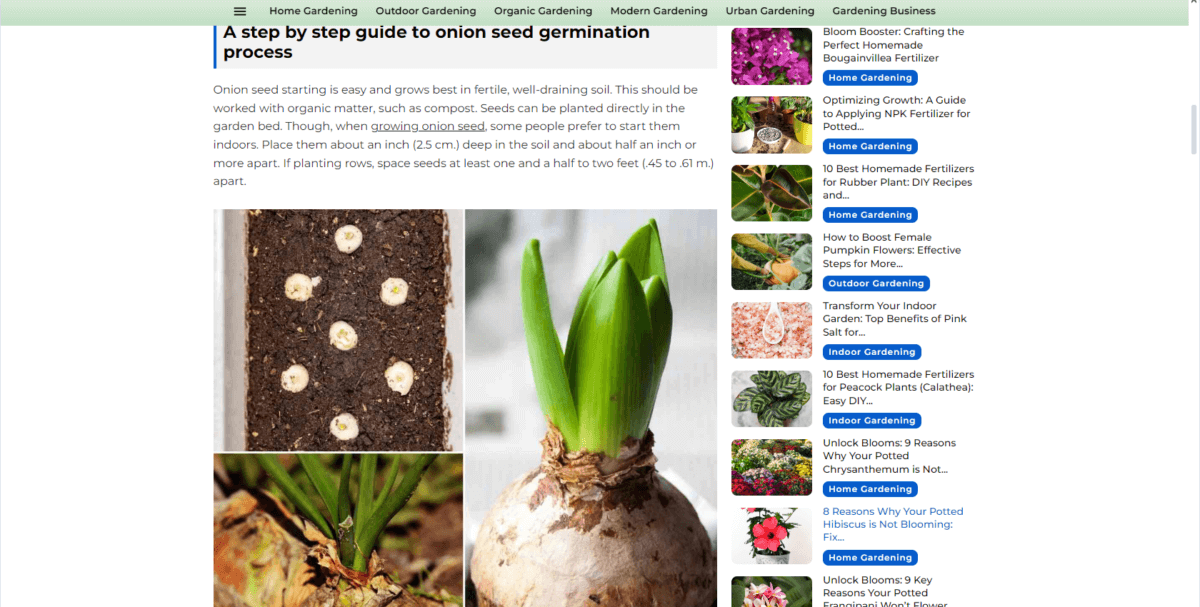
When I tried looking up the best way to stratify native prairie turnip seeds (Pediomelum esculentum), I was treated with surreal illustrations of farmers using concrete blocks on a stick to bash the daylights out of nubbly, cabbage-inspired plant blobs.
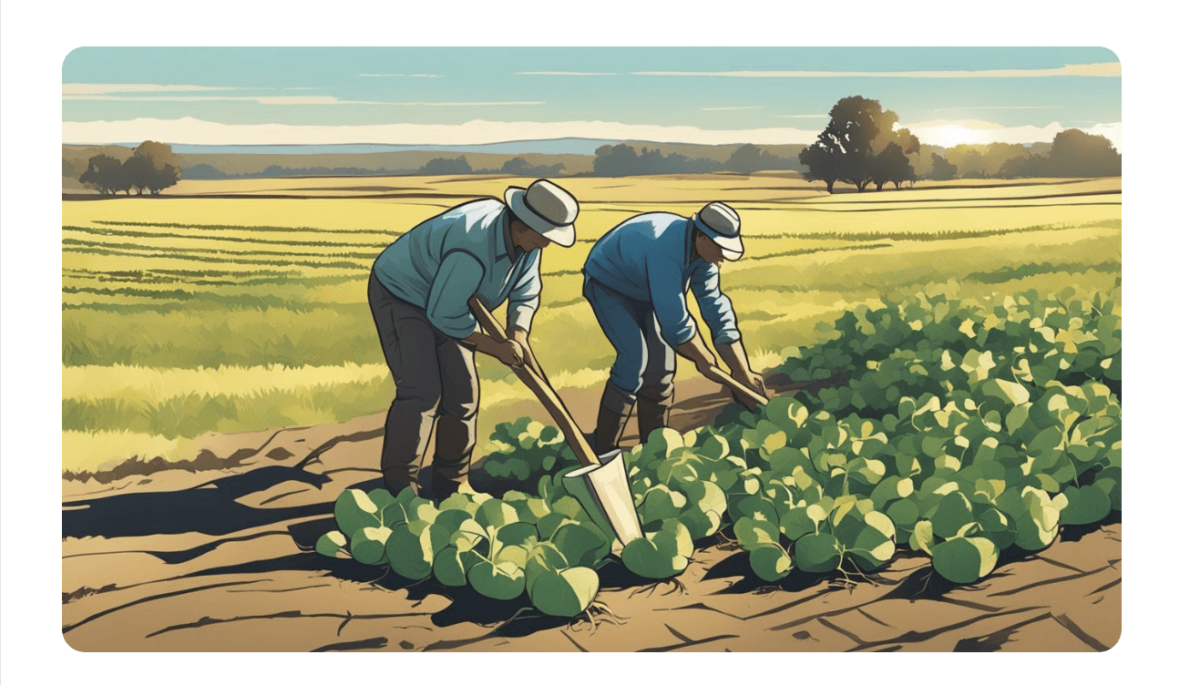
Knowing that a prairie turnip plant looks like this …

… I skipped that website too.
Getting flustered, I indulged my curiosity as to how far this madness went, and searched “how to keep chickens.”
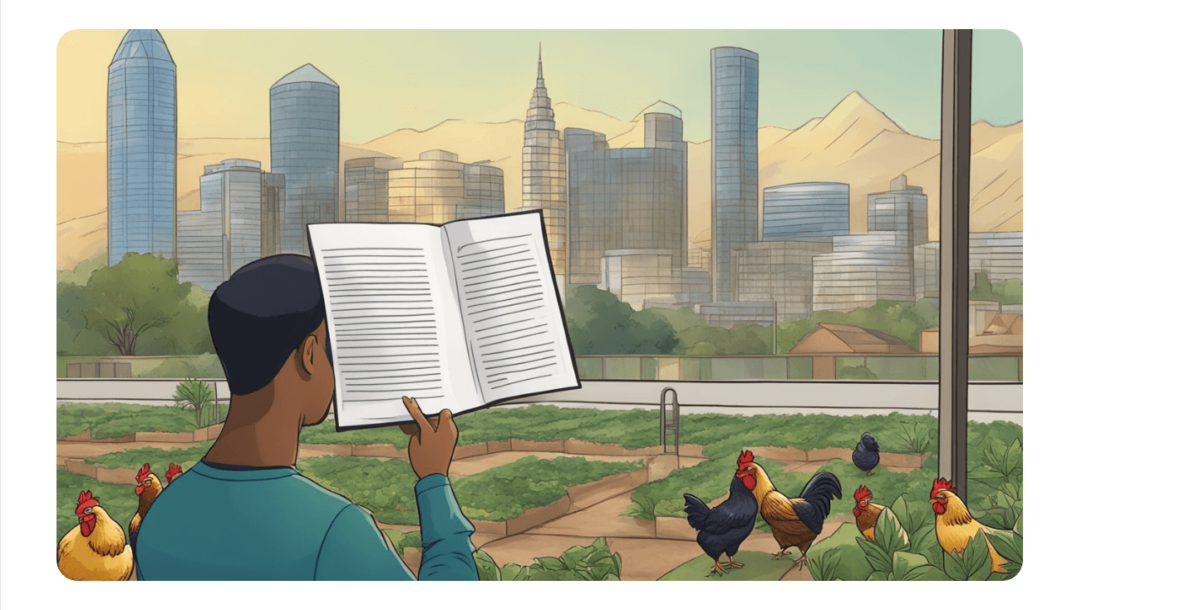
And then I got off the computer and fed my real chickens to help heal my heart.
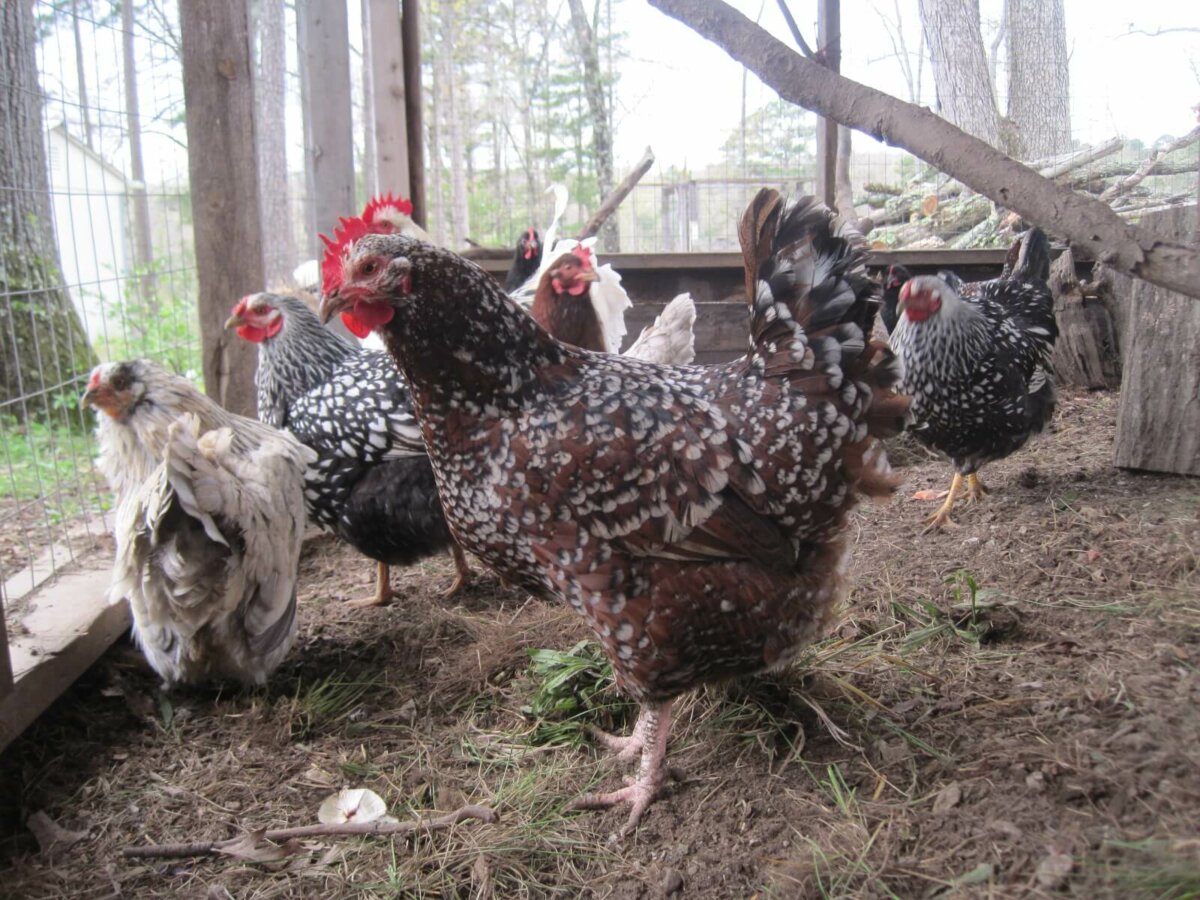
As many of us are starting to learn, AI-generated images and articles are no longer a fringe thing. They’re everywhere, and that includes the homesteading corner of the internet as well. You may already see that generative AI has been making huge waves in the fabric of our modern society, and its steady infiltration into all aspects of life is hard to ignore. Even on my off-grid homestead in the Ozarks, I see the influence of AI nearly every day.
Now, the fact that I’m a homesteader (and freelance writer and illustrator who pumps her own water and grinds her own flour) should tell you all you need to know about where my opinion falls on AI-generated content — somewhere between loathing and abhorrence, depending on the day. All the same, the fact that it’s out there and generating content at a mind-boggling speed, is something that I think we all need to pay attention to.
What Is AI-generated Content?

In its most basic definition, AI-generated content is anything that is produced using AI (artificial intelligence). You may have heard of ChatGPT and Jasper AI in the news, but beyond those are an ever-increasing range of programs that allow humans to use prompts that direct various forms of Assistants to create whatever content they want. With that tool in hand, AI is being used to generate entire websites overnight, complete with in-depth articles, AI-generated pictures, and excellent SEO (Search Engine Optimization) that makes it appear in nearly every online search you do.
Since AI is being trained to respond to human inquiries with the answers they seek, that means any time you do an internet search, your question is added to some data bank somewhere AI programs can access it. So if you’re researching homesteading content, AI is right there with you, paying attention to what you want to know, and quietly increasing its reach to encompass those subjects as well.
One problem. When it comes to homesteading, AI doesn’t know it all. Not by a long shot. What can a computer-based entity possibly know about real things in the real soil? The homesteading content that AI is creating is not made to actually help you along your homestead journey — it’s a response to searches for the sole purpose of harvesting views — not to be functionally useful to a homesteader. It means its usefulness and dependability are suspect.
Furthermore, the illusion of creation with AI is just that — an illusion. What AI is really doing is trawling to glean as much information as it can on a given prompt, and then patching together “new” content based on its programming.
Now, with AI on the job 24/7, there are often no humans at the reins to control what it’s creating. As a result, the AI-generated articles on homesteading topics run the gamut in quality. Some may be passable, but others are inaccurate at best and downright dangerous at worst. We can all laugh at how surreal AI-generated content can be (as evidenced by the images I found on an AI-generated site and used for this article), but the grim downside of these images and articles is the real risk of being taken as fact.
The additional problem with a lot of these sites is that, as far as I can see, there’s no real way to remedy it. I have browsed through several gardening and foraging articles with dangerously inaccurate information and illustrations, only to find that there’s no way to contact a real human and get the information corrected. Furthermore, the sheer volume of the articles being created is, in many cases, starting to dilute the true knowledge pool on the internet; with poorly written instructions and inaccurate information being copied and then pasted into new articles with the same poorly written instructions and inaccurate information.
So what’s the modern homesteader to do? Well, since AI doesn’t seem to be going away, here’s my best tips on how to wade through these bizarre new waters, and come out the other side knowing what you’ve found.
What Are Traits of AI-Generated Content?
The first step when dealing with AI-generated homesteading content is to identify it in the first place. There’s no sure-fire way to positively identify an article as definitely being penned by a program, but there are some tell-tale signs that can give you clues that what you’re reading may not be human made.
Repetitive Question-Based Headings
As I mentioned earlier, AI often uses search queries (the stuff you type into the search bar) to know what to make. If you come across an article of consecutive paragraphs with headings that all discuss the same basic repetitive idea (e.g., How to Germinate Bean Seeds, Germinating Bean Seeds, How Long Does It Take for Bean Seeds to Germinate? How Many Days Does It Take for Bean Seeds to Sprout? and How Long Until Bean Seeds Germinate?), you could guess they were collected by a program, not written by a human.
Inconsistent Content
Let’s say the article you’re reading tells you that Rhode Island Red chickens produce somewhere around 200 eggs a year. Then later it says they produce 120 eggs a year. Still later in the article, it claims these hens can lay more than 230 eggs a year? What in the world is going on?
Chances are, you’re reading a patchwork of information gathered from many different sources, and the real answer is somewhere in the middle. AI gathers data from websites, and if its references have different bits of information, it will merely piece together what it’s found, regardless of whether it’s sensible.
Pictures and Photos With Weird Attributes

This is one of the more amusing elements of AI-generated content, but in my opinion, no less insidious. If an article you’re reading has weird — and I mean weird — images that don’t seem real, they’re not. Watch for too many fingers, animals with too many legs, heads attached at an odd angle, or kitchen implements that don’t make sense.
Many Articles Published on the Same Day
If there’s a date on the article that you feel may be AI-generated, see if there were a whole slew of articles published on that site the same day. While it is not outside the realm of possibility that human-made content can be published en masse, it’s much less common. If you see a dozen or so articles all published within the same 24 hours — more so, within minutes of each other — you may rightly suspect they were generated by a program that was churning them out automatically.
A Robotic Voice
I know this one seems a bit obvious, but since AI isn’t human, its writing lacks the warmth, humor, wordplay, and wit that a talented writer can create. AI can generate pretty encyclopedic text that sounds scholarly enough, but it can’t replicate true mastery of words. I haven’t yet seen an AI-generated article that uses the first person yet, though I’m sure they’re out there.
How Do I Deal With AI-Generated Content?
I’ve already disclosed my bias when it comes to AI-generated content, but I hope that these guidelines can help my readers when they venture into the ever-changing landscape of the internet.
Use Multiple Sources
Whether you’re trying to figure out what to feed your chickens, when to start planting your parsnips, or how to set up an off-grid water system, you have huge decisions to make when it comes to setting up your homestead. I would strongly recommend that you never trust a single article to get you on your way for these important jobs. Looking through various sources both online and otherwise, will both give you the chance to glean information from a real article by a real person, and to see if there’s copied material skipping across websites. Chances are, if there’s an all-too-familiar paragraph showing up in several different articles, it was put there by a program (or a lazy writer).
Never Use an Illustration or Drawing for Identification
On a somewhat self-indulgent whim, I looked up how to forage pokeweed to see what would happen.
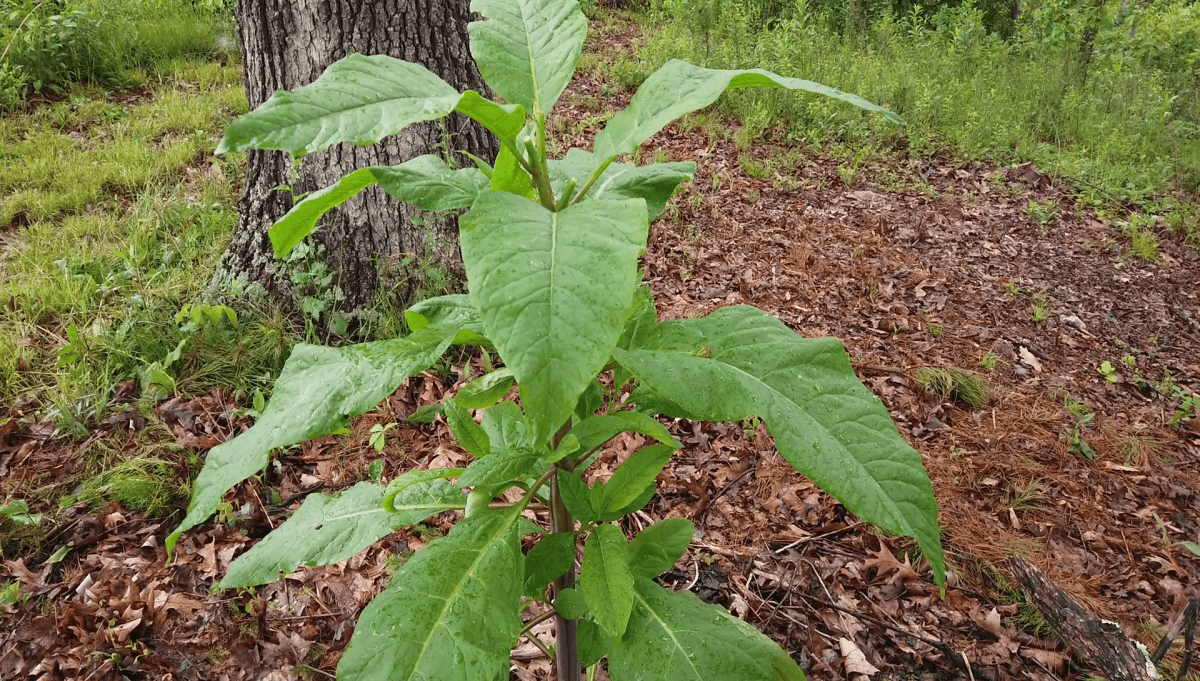
What I found was an article promising to teach how to forage wild poke sallet greens, while offering pictures like this as illustration.
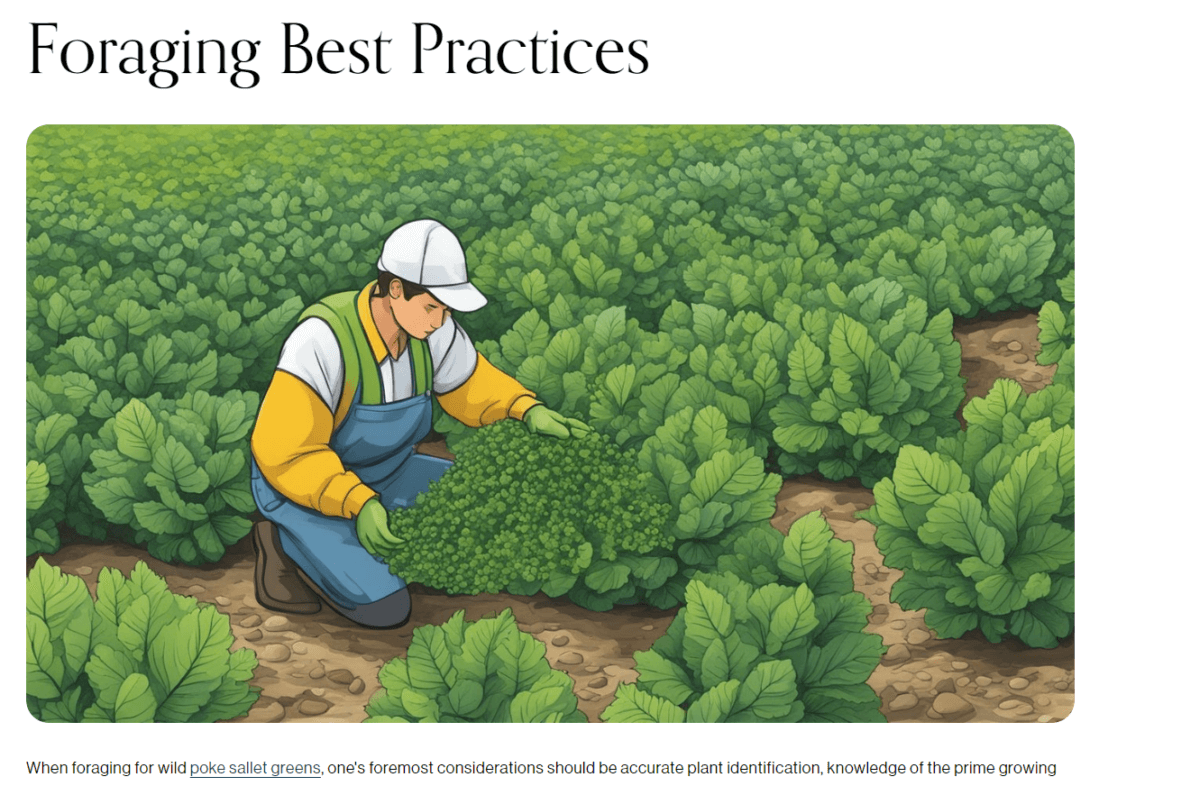
Since this article was rife with AI illustrations, I glanced through the text, too, and could see that it was a crazy mish-mash of both true and untrue statements on how to identify this wild edible. If someone wasn’t already familiar with the plant, it could be easy to get confused.
For another example, take a look at these “guineafowl.”
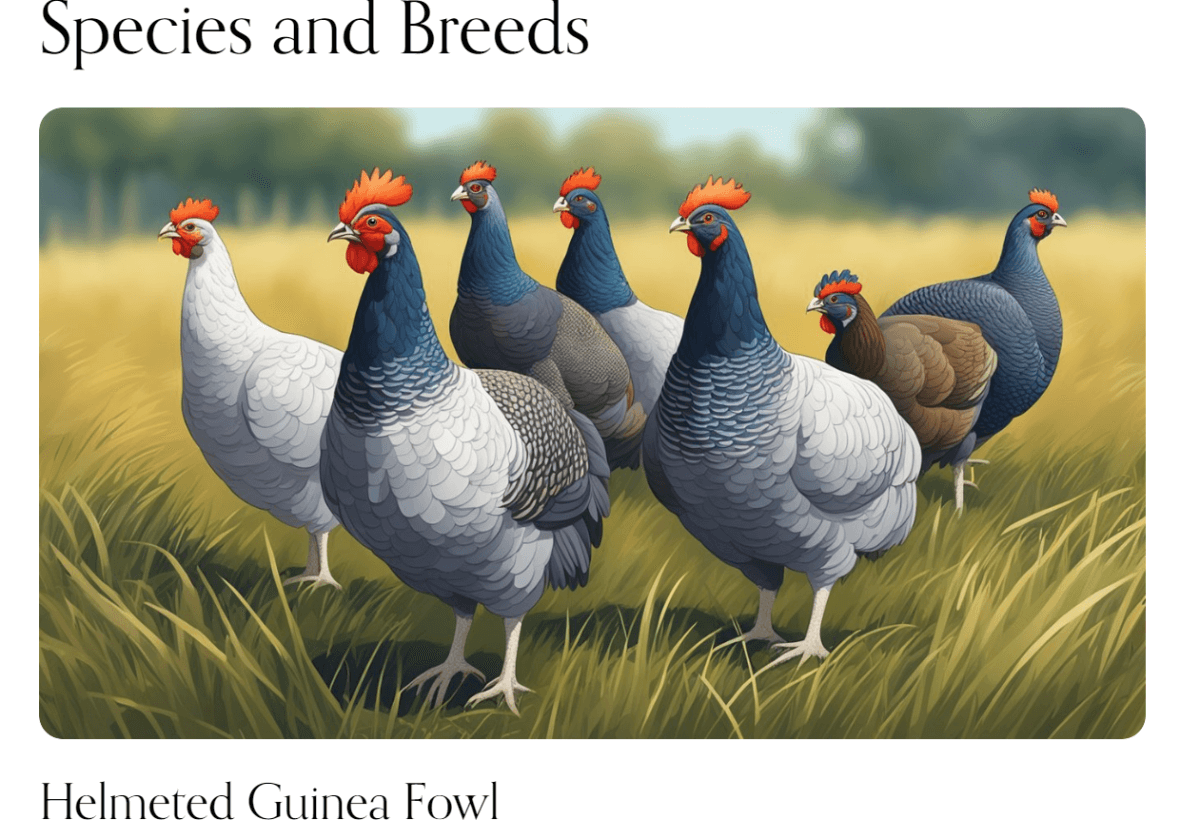
Then look at my real guineafowl.
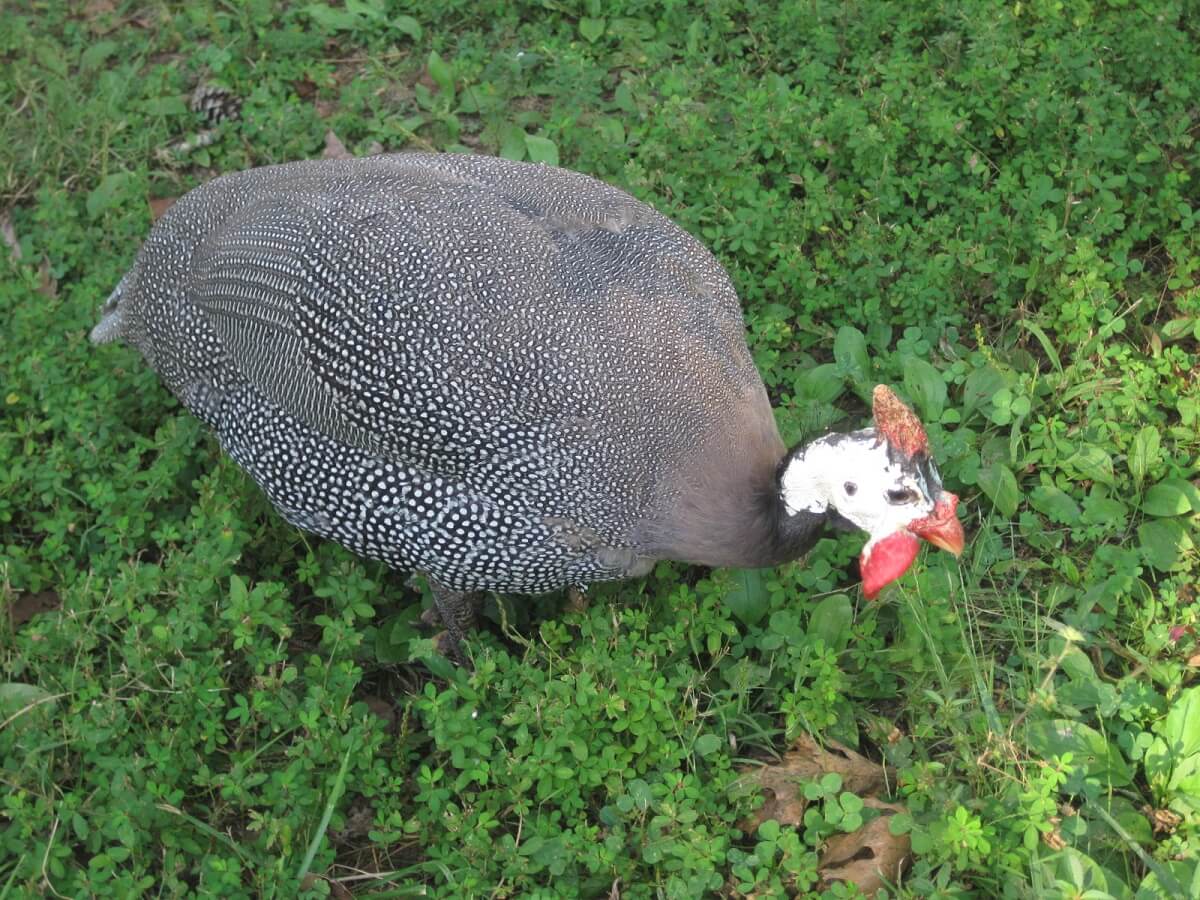
When it comes to identification, always use real photos. How do you know if they’re real photographs? Well, my advice is to give preference to an article where the author is the same person who has taken the photos, particularly when it comes to edible plant identification.
Check to See if the Article Has an Author
AI is not a person, obviously, and so when it comes to posting articles generated by it, you’ll find they don’t have an author attached to them. I would advise being dubious about any article that offers information without authorship or proof that a human put it together.
Granted, some websites are getting savvy to this practice and have started creating phony authors with stock photo profile pictures. When in doubt, research the person’s name and see if they’re an author anywhere else. Sometimes, their name will show up on journalist portfolio websites like Muck Rack, where you can investigate other pieces they’ve published.
Trust Websites That Have Earned Your Trust
It may sound a little self-serving to make such a statement, but a website like Insteading has been around for years, and, if you’ve been with us for many of those years, you know that we do the best we can to put together reliable information for you on the topics we discuss. We have an “About” page that gives more information, introduces you to the authors, and explains our purpose and goals. There’s contact information that you can use if you have a question or a problem.
Many AI-generated articles are hosted on websites with no real identity beyond the site name. An “About” page? Contact information? Statement of purpose? You often won’t find any of that. If the site seems to merely exist to host endless, authorless, humorless, personality-less articles on a huge range of topics, your alarm bells should start ringing.
Learn From a Real Person When Possible
Though the Brave New World we’re heading into is uncharted territory, homesteading has been around for a long time. That means, there are ample resources that were created well before AI made its entry on the world’s stage. It also means that you don’t have to settle for a poorly-written article to answer your questions. If you’re finding bad information online, forget the recently published content and go further back in time to find something authentic. Go to the library. Talk to a neighbor. Use a website like archive.org to investigate historical records that have facsimiles online.
Remember, every single AI-generated bit of content is NOT original. It was mashed together from bits and pieces of real photos and real articles that humans made sometime earlier. You don’t have to settle for reading poorly made articles with inconsistent information. Do your due diligence and find something real if it doesn’t show up with your first search.
Trust Your Gut
You may have heard of the uncanny valley, that strange point when a robot is so close to seeming human that it causes a gut feeling of revulsion or wrongness. The same goes for when you’re reading an article online, and it just doesn’t hit you right. When in doubt, don’t take what you’re reading at face value. Homesteading is, at its heart, a very human activity of self-resiliency, hard work, and real, tangible rewards. It makes sense that it doesn’t translate well into the virtual world. I hope it forever stays that way.
And finally, I encourage you to get out into the real world and learn by doing, not only reading. Your gardens, your animals, your homestead, and your experiences on real land with real people will teach you far, far more than any AI-generated article ever could.




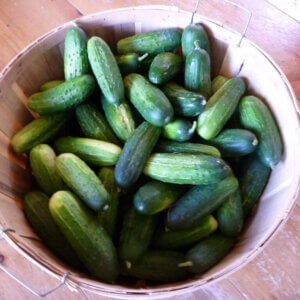














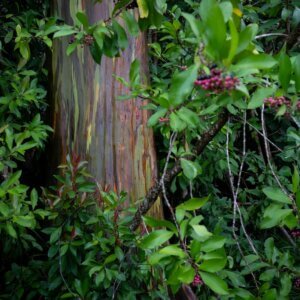












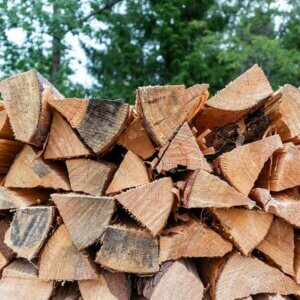








Why is everyone in such a hurry to get their information?
Most questions involving homesteading have been available for decades in well-respected and reputable books.
A little planning ahead and you can have most of the information you need at your fingertips in your library.
It doesn’t take much time or effort to put together a small library of books covering the entire range of subjects involved in homesteading.
Most homesteading books are published by a single or a few authors and most have reputations for accurate information.
This opinion of course is coming from someone who was raised on books and not the internet.
Books were the only option up until just recently.
Oh and you don’t need a power
source to read your book!
Rick
There were too many ads on this page to find the story. Video ads, ads at the bottom, ads every other paragraph. Too much.